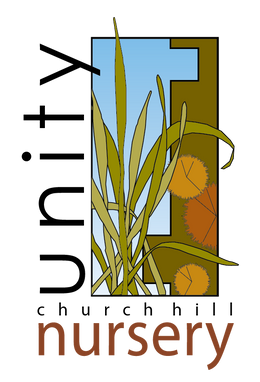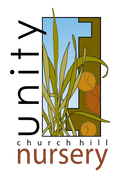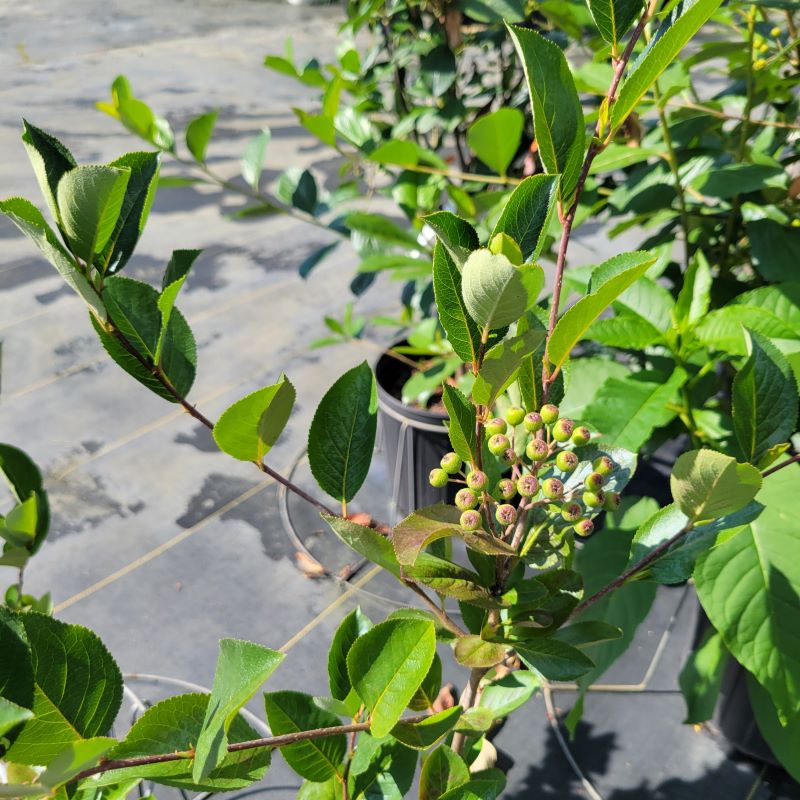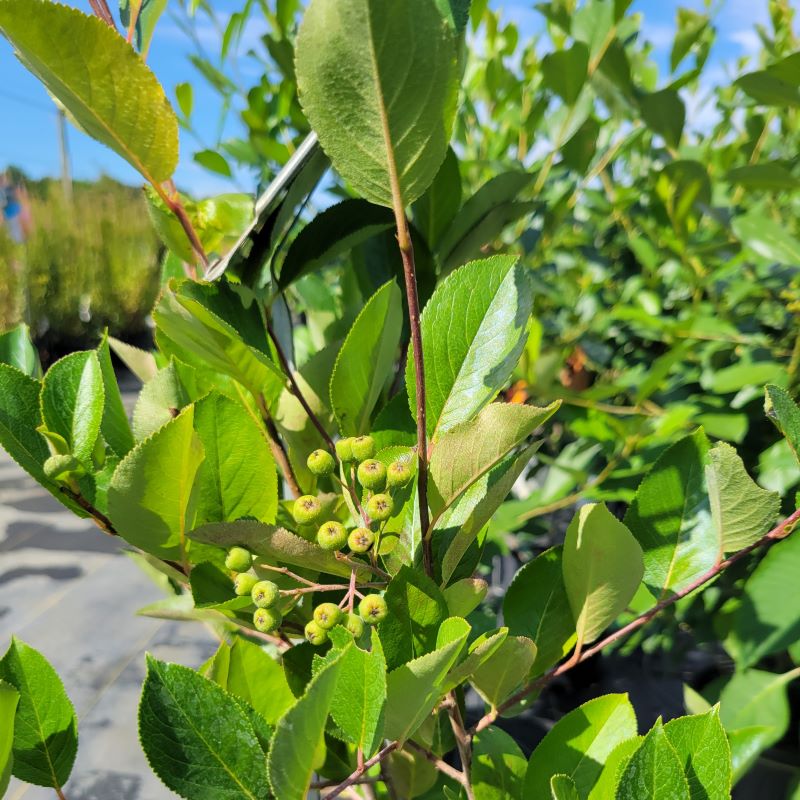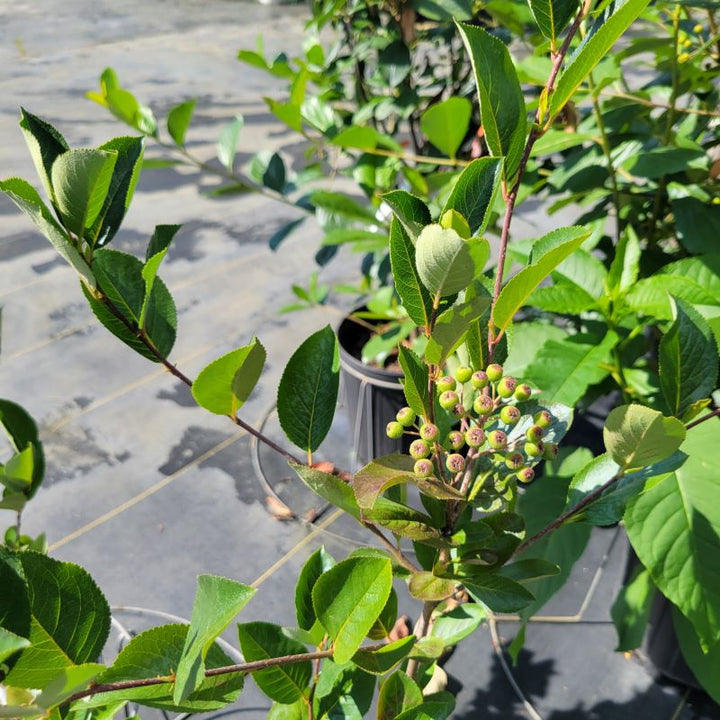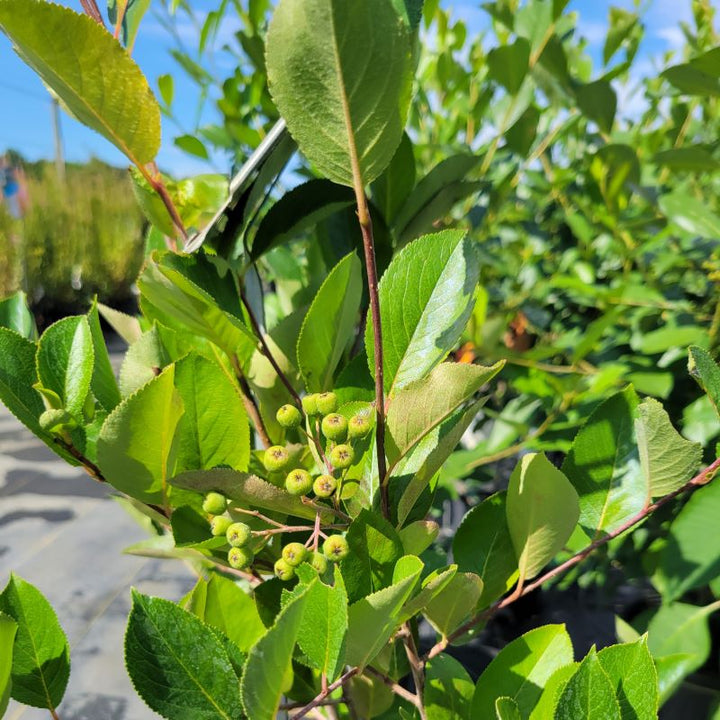Aronia melanocarpa (Black Chokeberry) Unity Grown
- Low stock - 2 items left
- Inventory on the way
Aronia melanocarpa, also called black chokeberry, is a medium to large-sized shrub found in forest understories and wetter, low-lying, part shade areas through much of the eastern half of the United States. Typically growing to about 3-6' tall and wide, though occasionally reaching heights of up to 10 feet, Aronia melanocarpa is noted for its glossy black berries, which are tart, bitter, and astringent (hence the plant's common name). From the early to mid-spring, black chokeberry produces 5-petaled white flowers which are highly attractive to a variety of pollinators; in the summer, once flowers are spent, pollinated blooms turn to the plant's namesake fruits. Fruits are highly attractive to birds, but black chokeberry is also well-regarded as an herbal supplement for their berries' antioxidant and anti-inflammatory properties.
Preferring moist, occasionally wet fertile soils, black chokeberry performs best in full sun to partial shade and is tolerant of flooding and compacted, heavy soils, but also tolerates periods of drought. Due to its suckering nature and relatively large height, black chokeberry is an excellent choice for naturalizing in woodland gardens, growing as a hedge or border, or for planting in small clusters where its fruit production and attractive fall foliage in shades of red and purple can really shine.
